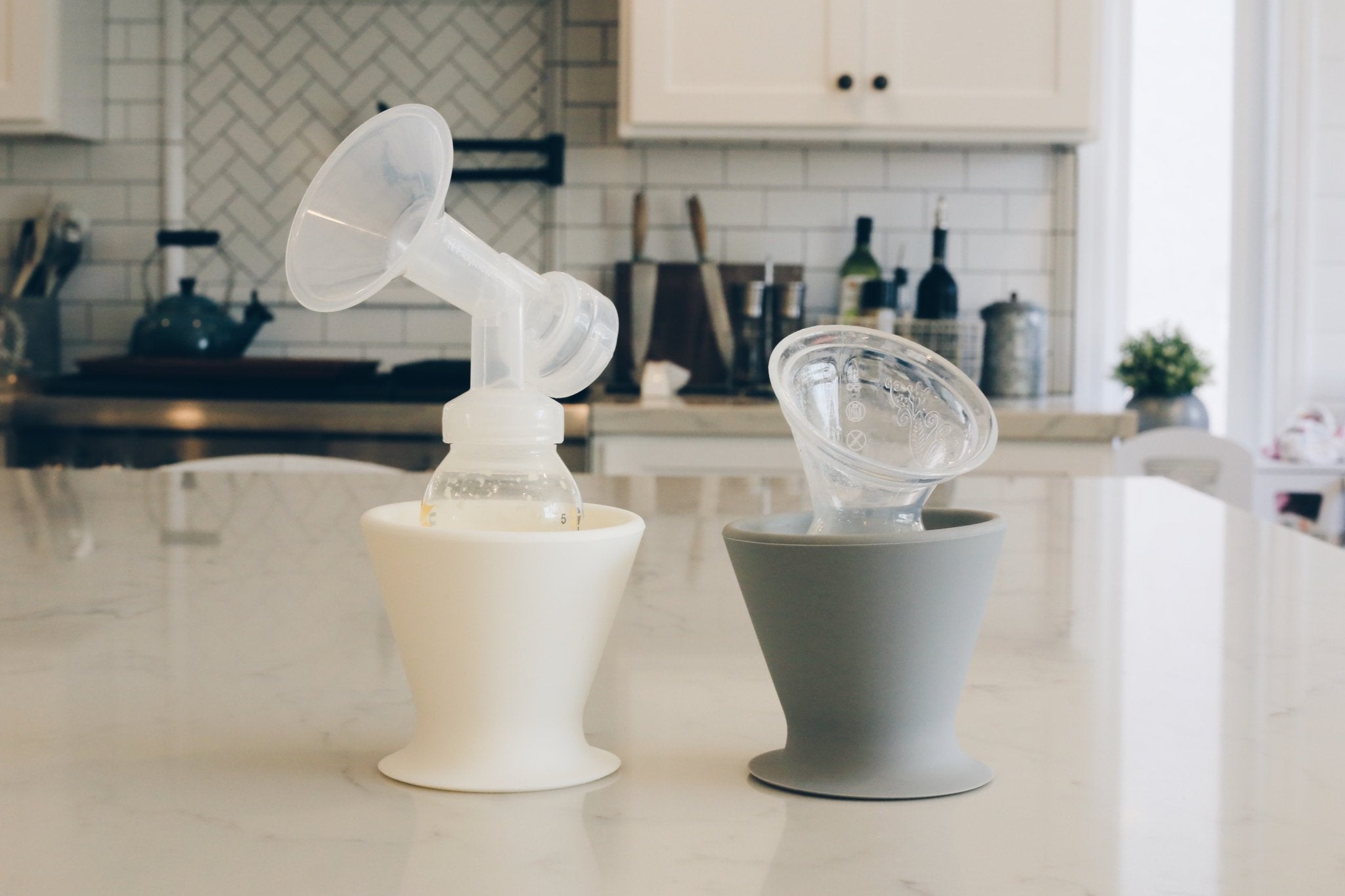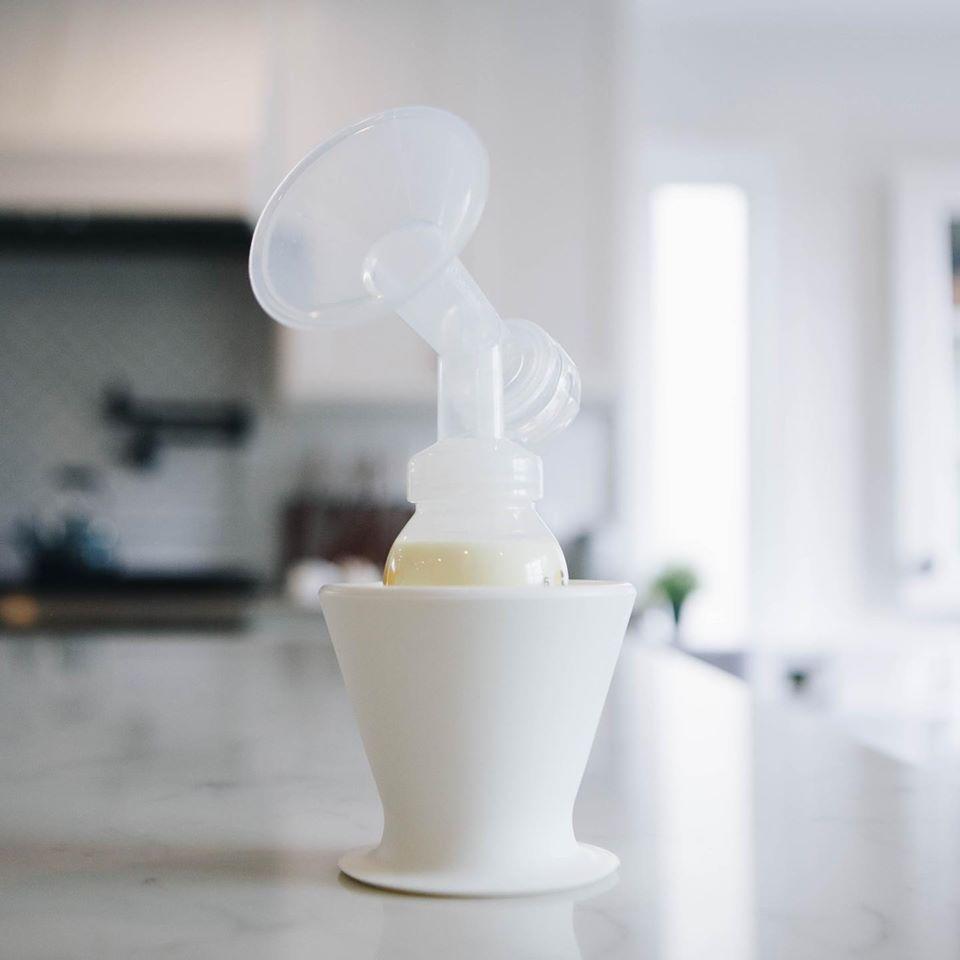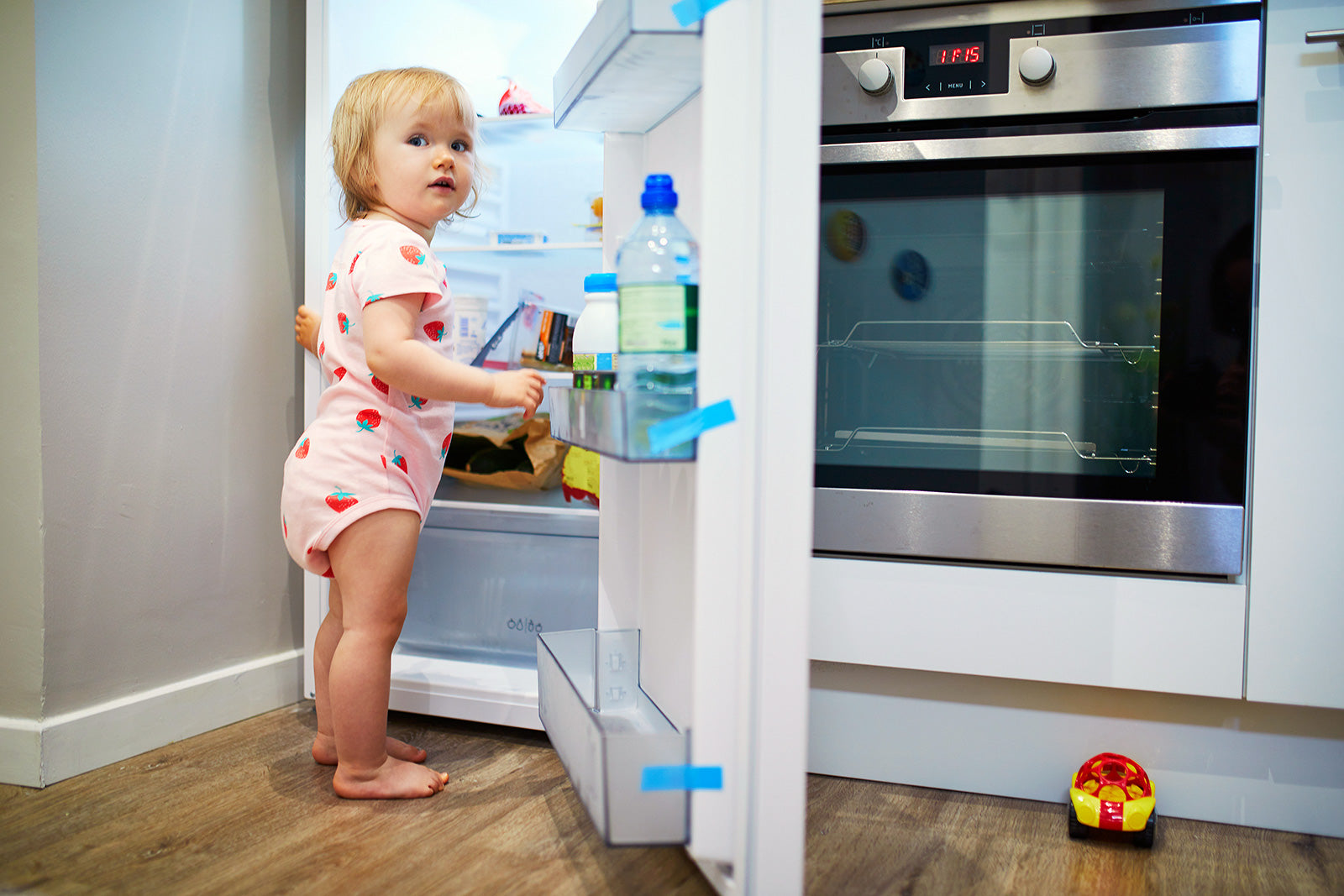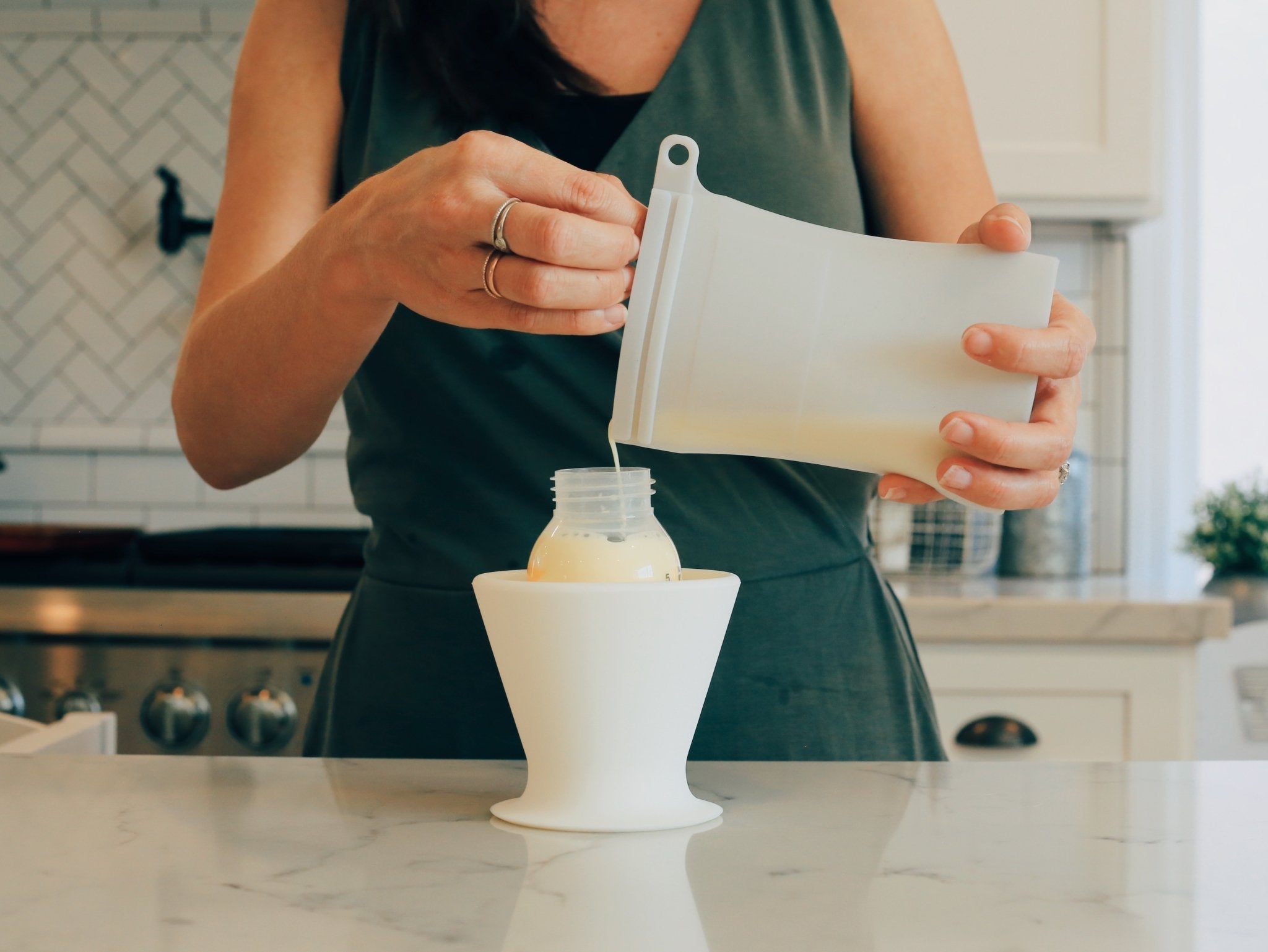Best Breast Pumping Tips for New Moms

Preparing to pump as a new mom can be a bit overwhelming. But it won’t take long before you realize just how amazing this process really is. With our best breast pumping tips, you’ll be able to start the process off strong so you can provide milk for your baby for as long as possible.
Breast Pumping Tips for Before the Baby Comes
Here's something else you'll want to add to your list of prenatal prep. Trust us when we say it will be 100 times easier to get this figured out now. Even if you don’t plan to pump breast milk straight out the gate, you’ll be glad you don’t have to figure it all out when the time comes.
Here are our best tips to prepare for pumping - best done in the weeks before baby arrives.
Research to find the right pump for you.
The pump your best friend uses may or may not be right for you. With so many options, you’ll want to do your homework to figure out which type of pump will work best with your situation. Here’s a quick rundown on the different types:
- Single-Electric - Great if you just plan to supplement breast milk.
- Double-Electric - This is the best choice for any mom who will head back to work or be away from their baby for an extended period of time each day.
- Double-Electric Hands-Free - There are now double-electric hands free options that fit inside your bra. They are often more expensive and may not be covered by your insurance, but if it’s in your budget, this is an excellent option.
- Manual Pump - If you’ll only be pumping occasionally, a manual pump is great. We also recommend having a manual pump as a back-up option to an electric pump...just in case!
Additionally, you’ll need to be sure that your pump fits...don’t wait until the baby comes to take it out of the box! Here is a great video that shows how you can tell if your breast flanges/shields fit properly:
See a Lactation Consultant.
It may seem a bit strange to see a lactation consultant before the baby arrives, but they will be more than happy to help you get all set up for your little one! By doing so, you’ll be able to get suggestions for pumps, find out if your pump fits correctly, and get great guidance for getting started on both your pumping and breastfeeding journey.
If you decide to wait until the baby is born, be sure to take advantage of an LC’s services in the hospital or later on before you start pumping.
Use this directory to find an IBCLC in your area.
Consider hand expressing or manually pumping before the baby is born.
Does this one have you tilting your head to the side thinking, “Say wha?” It’s actually a really amazing trick to consider if you plan to exclusively pump once the baby comes.
Your body is already producing colostrum before your baby is born, which means you can start expressing it in the last few weeks of pregnancy (37+ weeks) with your doctor's approval. Even though you won’t get a lot, colostrum is packed with nutrients for your baby and a little bit goes a long way when they’re tiny. Kristen of Be My Breast Friend recommends sticking with hand expressing with some occasional manual pumping (not an electric pump).
See her experience about harvesting colostrum below!
Pumping Tips for Keeping Up Your Supply
Pumping, in the beginning, will be slow-going and you won’t produce much. This is totally normal! But by sticking with it and following our tips below, you’ll be able to up your supply to be able to make plenty of milk for your little one.
Pump after the milk stops.
Lots of moms wonder, “How long should I pump for?”
And truly, there isn’t going to be a specific time that works for every mom when it comes to the ideal length of time a pumping session will take. I knew moms who could pump in less than 10 minutes, and I had times I needed to pump up to 30 minutes.
What we do know is that stimulating the breasts for at least 15 minutes is a good idea. Even if you seem finished at 10 minutes, you should pump for a few minutes beyond that. This sends a message to your body that it needs to produce more milk. Within a few days you should start to see more output by utilizing this strategy.
Pump Around the Clock.
No rest for the weary applies to pumping moms, too, unfortunately. I’ll just feed you the line you’ll hear a million times your first year...it won’t last forever.
Early on, you’ll want to pump when your baby would typically eat - which is at least every 3 hours. The minimum you’ll want to pump is 8 times over a 24-hour period, but for best results, try to aim for 10 during the newborn stage. Try to continue to mimic your baby’s feeds as time goes on. This means that when your baby drops the nighttime feed, you can consider doing so, as well. Here is a great resource on pumping at night.
Follow a Pumping Schedule.
You’ll want to aim for those around the clock pumping sessions to be about the same time each day. This helps your body adjust and you’ll be sure to have a “just right” amount of milk when it’s time to pump. Mimicking your baby’s schedule (or close to it) will help you stay on track.
Use the Power Pumping technique.
Power pumping will look similar to how a baby cluster feeds to get extra calories. On top of pumping every 2.5 - 3 hours, power pumping is an extra session done inside the course of an hour that will help you stimulate more milk. The process is basically pump-rest-pump-rest-pump. If your baby starts cluster feeding, this would be a great time to implement power pumping.
To fully implement the power pumping process and more tips on how to increase supply, read our article, “How to Increase Milk Supply by Pumping.”
Maximize that morning milk.
You’ll notice that you have the most milk in the morning. If you are currently a breastfeeding mom who wants to start building a stash for when you head back to work, we recommend pumping immediately after your baby’s first feed. You’ll be surprised at how much milk you can produce this time of day even after your baby has already eaten.
Exclusively pumping mamas can try to squeeze an extra pump session into the morning hours, as well.
Stimulate let down.
With pumping, it can often take several minutes for let-down to occur. This means you’re just waiting for the milk to flow as the clock ticks. We recommend using the combined technique of a warm compress with massage to activate milk flow. You can products specifically designed for the breast such as these gel pads from Lansinoh, or you can simply use a warm washcloth or heating pad.
Fuel your milk-producing body.
Just like any breastfeeding mama, you need to make sure that you are taking in enough calories and hydrating properly in order to keep your milk supply up. Early on, the calories will come from extra bodyweight that you have due to pregnancy, but after you’ve lost the body weight, it’s normal to need around 500 more calories per day.
Here is a great resource from the Children’s Hospital to make sure you’re eating the right foods to give both you and your baby optimal nutrition.
Pumping Tips to Make Life Easier
Being able to pump enough for your baby is number one. But guess what helps you pump more? Lowering your stress level. So these tips are really just as important because they allow you to simplify the pumping process, which in turn makes you happier and ready to let that milk flow.
Eliminate spills with the bökee.
The bökee is a bottle accessory you’ll use for years to come. We love it for simplifying the pumping process because of its ability to eliminate spills that are so likely to happen with breastfeeding.
You have to be so careful when removing pump parts and setting them down...especially with the shields attached that make them top-heavy. The bökee gives the perfect resting spot for your bottles as you detach the shields and combine the milk after your pumping is complete. And when it’s time to feed your baby, the bökee allows you to prep a bottle one-handed so you can get your baby fed stat.
Watch Kristen of Be My Breast Friend use not one, but two bökees!
Have a designated pumping “spot”.
Whether it’s at home or work, we recommended having a go-to spot where you’ll usually pump. Be sure you have everything you need, including anything to pass the time, within reach.
This means making a cozy spot that feels more like a relaxing time-out instead of 20 minutes of dread. Having everything in place ahead of time (for example, having your bökee right next to you for when it’s time to pour the milk) will make the process stress-free. (And don’t forget to make a cozy spot for your baby alongside you if you’ll be together!)
Use a pumping app.
Of course “there’s an app for that!” If you’re an exclusively pumping mama or pump the majority of the time, having a pumping app can be extremely helpful. Milk Stash, for example, can keep track of:
- How much you pump
- When you pump
- How much you have stashed in the freezer
You’ll also get notified when you have milk that is about to expire. If you can find a free option such as this one, it’s really a no-brainer!
Store pump parts in the fridge.
I didn't learn this tip until baby #3...and it sure would’ve saved me a lot of minutes of cleaning up after all those pumping sessions with the first two babies!
Because bacteria doesn’t grow on food in the refrigerator over short periods of time, you can simply place your pump parts in a gallon-size bag and put them in the fridge between pumping sessions. This way, you only have to do a complete washing and sanitizing of your pump parts once per day.
Pump hands-free.
Something else I did with baby #3 was get a hands-free pumping option. This can be done with a hands-free pumping bra, purchasing pumping cups that are compatible with your current pump, or a double-electric pump that is hands-free right out of the box.
You can even pump and drive if you have a hands-free pumping option! This was something I did often on my work commute. I am not exaggerating when I say that pumping hands-free is life-changing. Being a mom is busy, so anything that allows us to multitask we’ll take, right?!
Becoming a Breast Pumping Pro
Just like anything new, breast pumping has a learning curve. But what feels strange and cumbersome early will feel like part of your normal routine soon enough. Utilizing these best breast pumping tips will help you continue this journey for as long as it's right for you and your baby.




